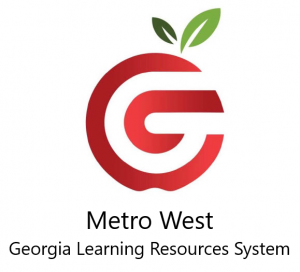Georgia Learning Resources System (GLRS) History
In recognition of the State’s obligation to provide appropriate educational and related services for exceptional students, the Georgia Assembly in 1968 enacted H.B. 453, mandating services to this population by 1977. This action placed the state in the national forefront as one of the earliest states to pass such legislation, and Georgia has remained a leader in the provision of services to students with special needs.
The Georgia Learning Resources System (GLRS) was established in 1971 as a component of the new statewide initiative to serve exceptional students. The chief objective of the project was to provide necessary support services to teachers assigned to work with special needs children. GLRS began initially as an affiliate, multi-state Southeast regional consortium, funded by the U.S. Office of Education, Bureau of Education for the Handicapped. The project was coordinated regionally by the Southern States Cooperative Learning Resources System (SSCLRS) which encompassed the southeastern state region including Alabama, Florida, Georgia, Louisiana, Mississippi, and South Carolina.
The initial scope of operation for the GLRS project included provision of inservice and pre-service training at the local level to upgrade the professional status of special education teachers. Inservice efforts were modeled after Iowa Plan which called for training “Master Teachers” and providing them with skills resources to return to their local school systems to conduct training for other teachers. Other inservice efforts provided intensified workshops in the areas of behavior modification, media use and diagnostic/prescriptive processes. Operation Plans for pre-service training were coordinated with the states’s college/university training programs.
A major thrust of the GLRS project was to determine what equipment and instructional materials were available locally and the level of knowledge about these resources. Appropriate training was then made available, where necessary, through demonstrations and workshops. The GLRS media centers provided a collection of materials which were used for short term loan, training and field testing in order to determine their appropriateness prior to actual purchase at the local level.
Increased demands for GLRS services were brought on by growing numbers of special education staff throughout the state. Additionally, the passage of mandatory federal legislation in 1973 (Section 504 of The Rehabilitation Act) and in 1975 (P.L. 94-142, Education for the Handicapped Act) substantially expanded the role of the state in providing services to children with special needs. Thus, in 1975 the GLRS network was increased to 16 centers and service regions for the program were realigned to coincide with newly-established RESA.
The 1975 expansion plan also emphasized the GLRS role in staff development and consortium efforts between local school systems, colleges and universities and staff development programs. Development of the Southeast Regional Resource Center (SERRC) in the mid-1970s brought new resources to GLRS which provided technical assistance for model development and direct diagnostic services for severely and multiple special needs students. These resources enabled the network to establish a statewide referral system to provide contracted comprehensive evaluations for children with complex, severe and multiple special needs whose needs cannot be met through local resources. Through this program, several agencies were identified as having the capability of providing the necessary diagnostic service.
By 1976, GLRS was providing support services to special education teachers and children with special needs, ages 0-21. As a result of the increased number of centers throughout the state, services were expanded to include regular education staff who work with special needs students in “mainstream” settings. As can be discerned from the history of the network, GLRS is a dynamic program which has continued to change its focus based on identified state needs. The program has emerged as a comprehensive support service to educators (regular and special), administrators, parents, related services personnel and other service providers.
GLRS has been designated as being responsible for the following state objectives:
- Assist LEAs in developing and implementing a comprehensive system of personnel development (CSPD) for special education programs.
- Provide an information dissemination and interchange network to inform personnel of recent developments in the area of special education.
- Provide information and training to assist parents in understanding their rights and responsibilities for the education of special needs students.
- Provide direction services to parents, surrogates, child serve agencies, and other individuals seeking information regarding programs for special need child location, identification, LEA reporting, interagency activities.
- Provide a collection of specialized equipment and materials for short-term loan and use in training, pupil assessment, and programming for children with special needs.
- Engage in other activities relating to GLRS responsibilities as determined by local priorities and in conformance with state workscope elements.
In addition, most GLRS centers have listed other objectives which address specific needs within their service region which may not be statewide in scope.
